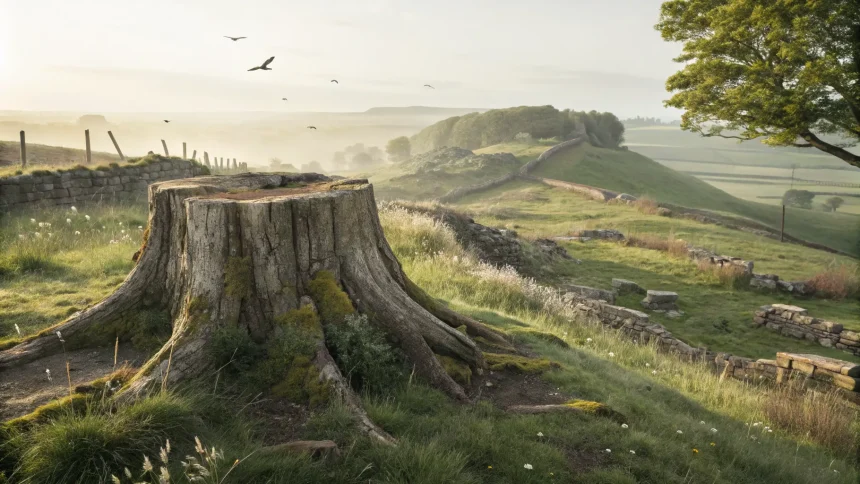A tree that had been a fixture of the landscape near Hadrian’s Wall for almost 150 years was cut down in September 2023. The tree, which had stood as a silent witness to history since the late 19th century, was removed for reasons that have not been specified in available information.
Historical Significance
The tree’s location near Hadrian’s Wall gave it particular historical importance. Hadrian’s Wall, built by the Romans in 122 AD, stretches 73 miles across northern England and represents one of the most significant Roman monuments in Britain. The wall was constructed under Emperor Hadrian as the northwest frontier of the Roman empire.
Having stood since approximately the 1870s, the tree had become part of the cultural landscape surrounding this UNESCO World Heritage site. Visitors to Hadrian’s Wall often used prominent trees and natural landmarks as navigation points or meeting places when exploring the ancient Roman fortification.
Environmental Impact
Trees of such advanced age typically provide significant ecological benefits to their surroundings. A 150-year-old tree would have:
- Served as habitat for numerous bird species, insects, and small mammals
- Contributed to soil stability in the area
- Provided shade and shelter for visitors and livestock
- Sequestered substantial amounts of carbon over its lifetime
The removal of such an established tree creates a gap in the local ecosystem that will take decades to replace naturally.
Public Response
While specific public reactions to the tree’s removal have not been detailed, the felling of historic or landmark trees often generates community response. In similar cases across the UK, the removal of heritage trees has prompted concerns about preservation of natural landmarks, especially those connected to sites of historical significance.
“Trees of this age become more than just plants—they become monuments in their own right,” noted a spokesperson from a UK conservation group in a similar case. “They connect us to our past in tangible ways that few other living things can.”
The timing of the removal in September 2023 coincided with the end of the summer tourism season at Hadrian’s Wall, which typically sees reduced visitor numbers as autumn approaches.
Local authorities and heritage management organizations typically require permits and conduct assessments before removing trees of historical or ecological significance, particularly those near protected monuments like Hadrian’s Wall.
The space left by the tree’s absence will likely alter the familiar landscape for regular visitors and locals who had grown accustomed to its presence over generations. As with many changes to historic landscapes, the full impact of its removal may not be fully appreciated until some time has passed.









